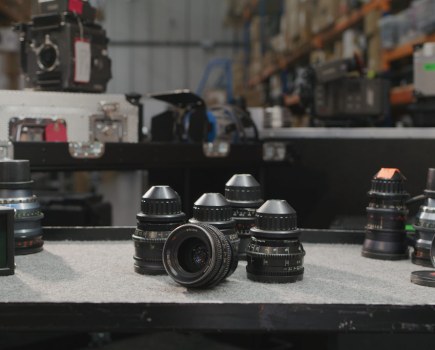Olympus will next month launch the Olympus E-5, a DSLR the firm admits may be the last of its traditional Four Thirds cameras as it signals a future without optical viewfinders.
The news appears to support controversial comments made by US DSLR manager Richard Pelkowski earlier this year.
Pelkowski had speculated that the Four Thirds system will be using a mirrorless viewfinder system within the next 24 months, as the quality of electronic viewfinders had improved so much. Speaking at the PMA trade show in the US, Pelkowski had explained that switching from a traditional mirror SLR system would save space and weight in Four Thirds cameras, and would make the incorporation of HD video functions much easier.
However, days later, Toshiyuki Terada, manager of the SLR planning for Olympus Tokyo, refuted Pelkowski?s comments, telling AP that the Olympus Four Thirds camera range will continue to use mirror-type viewfinders.
Six months later, the Olympus E-5 is born, boasting the ?reliability? of the E-3 with the ?evolution? of a Pen, according to Olympus ? but it could be the last E-series Four Thirds camera.
The Olympus E-5 is a magnesium-bodied DSLR that borrows its 12.3-million-pixel High Speed Live MOS imaging sensor from the E-PL1 Micro Four Thirds camera but features a new TruePic V processing engine to optimise image quality.
The newcomer sports a flip-out 3in (920,000 pixel resolution) screen and is being released at the end of October to ?show E-3 owners they have something to upgrade to?.
A dedicated button can be used to activate the newly incorporated HD (1280×720 pixel) movie function and the Olympus E-5 is compatible with both SD and CompactFlash storage.
Olympus shies away from consigning Four Thirds DSLRs to history, but the firm has hinted that this may be the last Four Thirds model.
?We will continue to do these [Four Thirds cameras] until micro cameras can do what other products can,? said Olympus UK’s Consumer Products marketing manager Mark Thackara.
?All cameras will be mirrorless in the future.?
Olympus Europe spokeswoman Franziska Jorke cited the autofocus and burst rate of DSLRs as still being superior to Micro Four Thirds models, along with the optical viewfinders.
When challenged by AP, Olympus shrugged off the possibility that equipping all future system cameras with an EVF will alienate existing E-system DSLR users.
?At some point someone has to draw a line in the sand? We will continue to support that [E-system] until other technology catches up,? said Thackara.
Jorke predicted that the concept of a camera ?will change in 5-10 years?.
However, in a bid to reassure photo enthusiasts, she said there will always be an Olympus camera body available ? whether a DSLR or another type of camera altogether ? to allow users to benefit from current Four Thirds lenses.
Meanwhile, the ?dustproof, splashproof? E-5 is expected to cost around £1,500 body only.
Users will have a choice of menu styles, classic or a more ?user friendly? one that resembles that on Pen E-series models, explained Thackara.
The Olympus E-5 features the same body shape and shooting drive rate as the E-3 but contains three custom function buttons instead of two.
And Olympus has expanded the Art Filters with the addition of a new effect called Dramatic Tone, designed to enhance the shadow in an image to create an ?HDR?-type look according to Toshiyuki Terada.
The Art Filters ? of which there are now ten in total – can also be used in movie mode.
Claimed highlights of the E-5 also include the ability to display a Level Gauge in the viewfinder and two ?easy to use? dials and cursor keys for image playback.
Extra article: Is this really the end for Olympus DSLRs?



Toshiyuki Terada








